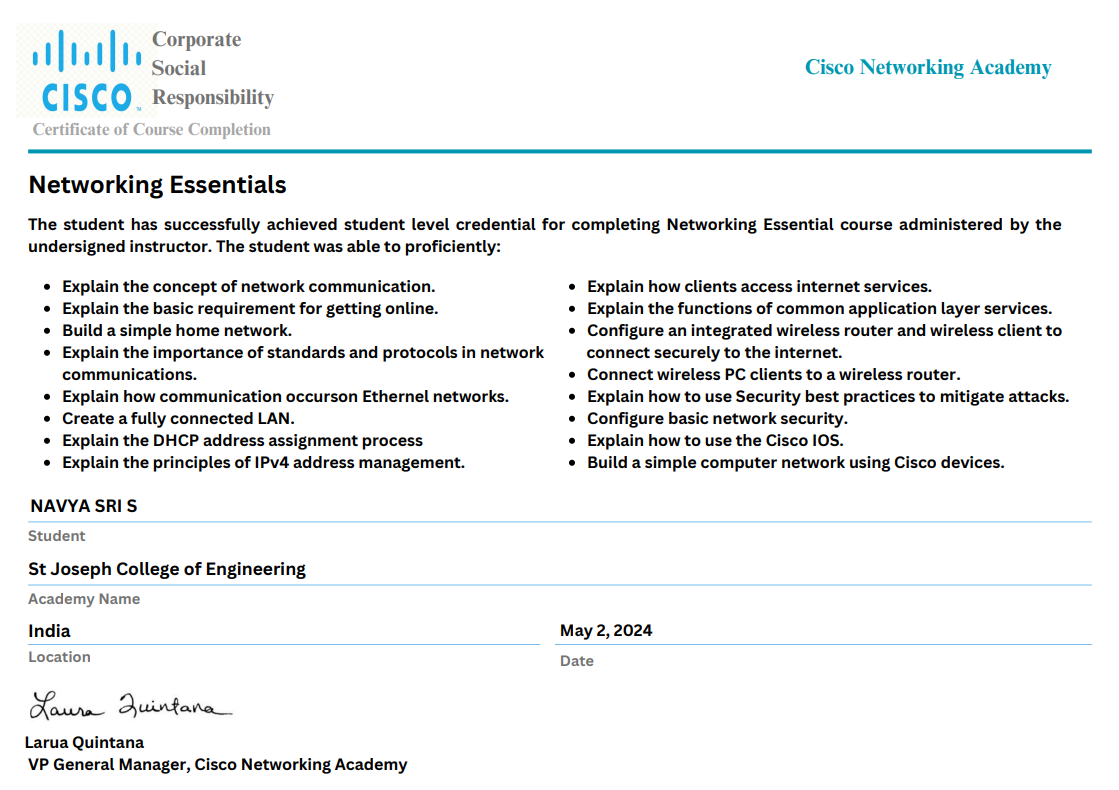
The Centre of Excellence (CoE) for CCNA at St Joseph College of Engineering Campus has been established on 15th September 2018 powered
by CISCO Networking Academy (Academy Partnership). The vision of the CoE is to enable the institution as a networking hub in the
emerging technologies. CCNA is designed to improve, enhance and evaluate the networking knowledge of an individual. The meaning
of “CCNA” is to enable students and academic professionals to a higher level by transforming them 360 degrees in the area of
networking.
CCNA is a certified course by CISCO Networking Academy. CISCO- CCNA LAB has been set up in the Department of Computer Science and
Engineering to help the students to get certification in the Networking course which provides them better job opportunities in the
networking domain and also help the research scholars to use the components available in the lab to carry out the research work..
Packet Tracer, a cross-platform visual simulation tool designed by Cisco Systems allows users to simulate the configuration of
Cisco routers and switches using a simulated command line interface. Several certified free courses are available on Netacad
platform providing exposure to new technologies recognized by many recruiting companies.
1. Great Acceptability
2. A Prerequisite for Future Certifications
3. Better Salary and Perks
4. Career Boost
5. Global Recognition
1. Explain Network Technologies
2. Explain how devices access local and remote network resources
3. Describe Router hardware
4. Explain how switching operates in a small to medium sized business network
5. Design an IP addressing scheme to provide network connectivity for a small to medium- sized business network
6. Configure initial settings on a network device.
7. Implement basic network connectivity between devices
8. Configure monitoring tools available for small to medium-sized business networks
9. Determine how a router will forward traffic based on the contents of a routing table
10.Explain how switching operates in a small to medium-sized business network.
11.Use monitoring tools and network management protocols to troubleshoot Data Networks
12.Configure monitoring tools available for small to medium-sized business networks
13.Configure Ethernet switch ports
14.Implement VLANs
15.Implement static routing and RIPv2
16.Implement DHCP on a router
17.Implement Network Address Translation (NAT)
18.Implement Access Control Lists (ACL’s) to filter traffic


CO-ORDINATORS
Dr. M. Navaneetha Krishnan
Professor & Head of the Department,
98403 96564
cisco@stjoseph.ac.in